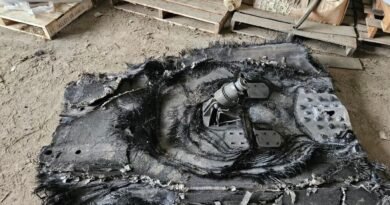The Potential Transformation of Indo-Pacific Policy Under Trump
President-elect Donald Trump has stated that U.S. allies in the Indo–Pacific region should increase their defense spending.
News Analysis
Expectations are high for sweeping changes in U.S. Indo–Pacific policy during President-elect Donald Trump’s second term in office. This is expected to impact the ongoing strategic competition with China.
Leaders in Congress and the national security sector are gearing up for increased confrontation as the administration takes a harder stance against Chinese aggression in the region.
Rep. John Moolenaar (R-Mich.), chair of the House Select Committee on the Strategic Competition Between the United States and the Chinese Communist Party, anticipates a firm foreign policy approach in the Indo–Pacific in a second Trump administration.
In a statement from the committee’s staff shared with The Epoch Times, Moolenaar highlighted the focus on peace through strength in American foreign policy during Trump’s first term.
Moolenaar suggests that this strength should extend to U.S. allies in the Indo–Pacific, with Trump expected to urge regional partners to boost their defense spending in order to receive continued U.S. support.
“It is imperative for the entire free world to invest in collective military power urgently to deter conflict, promote global prosperity, and safeguard our values against CCP [Chinese Communist Party] aggression,” Moolenaar stated.
However, these increased expectations from Washington’s allies could bring both opportunities and risks to U.S. relations in the region as pressure mounts on regional partners to adopt a more proactive defense stance.
Taiwan Flashpoint
The CCP asserts its claim over Taiwan, despite never having controlled the island. CCP leader Xi Jinping has made unifying Taiwan with the mainland a priority, ordering the Party’s military to prepare for potential conflict by 2027.
The United States does not officially endorse Taiwanese independence or forceful unification of the territories. Nevertheless, since 1979, Washington has committed to providing Taiwan with necessary arms for self-defense.
Since 1979, the United States has also upheld a policy of strategic ambiguity, neither confirming nor denying its willingness to engage in a military conflict to defend Taiwan from CCP aggression.
The importance of Taiwan’s independence goes beyond its democratic governance. The island is a major producer of semiconductors, critical in various industries. Trump’s pragmatic approach to international security has raised questions about Taiwan’s role in the global economy.
Since 1950, Taiwan has spent over $50 billion on U.S. arms, making it one of the top buyers of U.S. arms after Japan, Israel, and Saudi Arabia, according to the Council on Foreign Relations.
Russell Hsiao, executive director of the Global Taiwan Institute think tank, highlighted Trump’s unclear stance on Taiwan’s defense, suggesting it may embolden CCP attempts to sway American and Taiwanese decision-makers from defending Taiwan.
Hsiao emphasized that Trump’s departure from past norms could strengthen bilateral relations and encourage Taiwan to demonstrate determination in defending itself, potentially leading to increased U.S. support through enhanced arms sales.
“President-elect Trump is expected to stress burden-sharing in security relationships with allies and partners,” Hsiao noted.
“While this may be perceived negatively by most allies and partners, it could generate a more proactive stance in supplying a wider array of arms to Taiwan suited for various potential scenarios.”
Trump Expected to Deliver Security—at a Price
Taiwanese leadership has expressed commitment to assuming greater responsibility and defending against CCP aggression.
John Mills, former cybersecurity chief in the Office of the Secretary of Defense, emphasized that a robust defense budget would help Taiwan ensure consistent U.S. support. Trump views military expenditure as a key metric for gauging an ally’s willingness to defend itself.
Mills stated, “We have a poor track record when we carry the burden for other countries. At least 2 percent of GDP spent on defense is requested, with 4 to 5 percent becoming the new standard.”
Currently, Taiwan allocates about 2.4 percent of its GDP to defense, as reported by CIA data.
Defense spending among U.S. allies in the region varies. South Korea invests about 2.7 percent of its GDP in defense, the Philippines around 1.5 percent, and Japan, as part of a militar…
Source link





